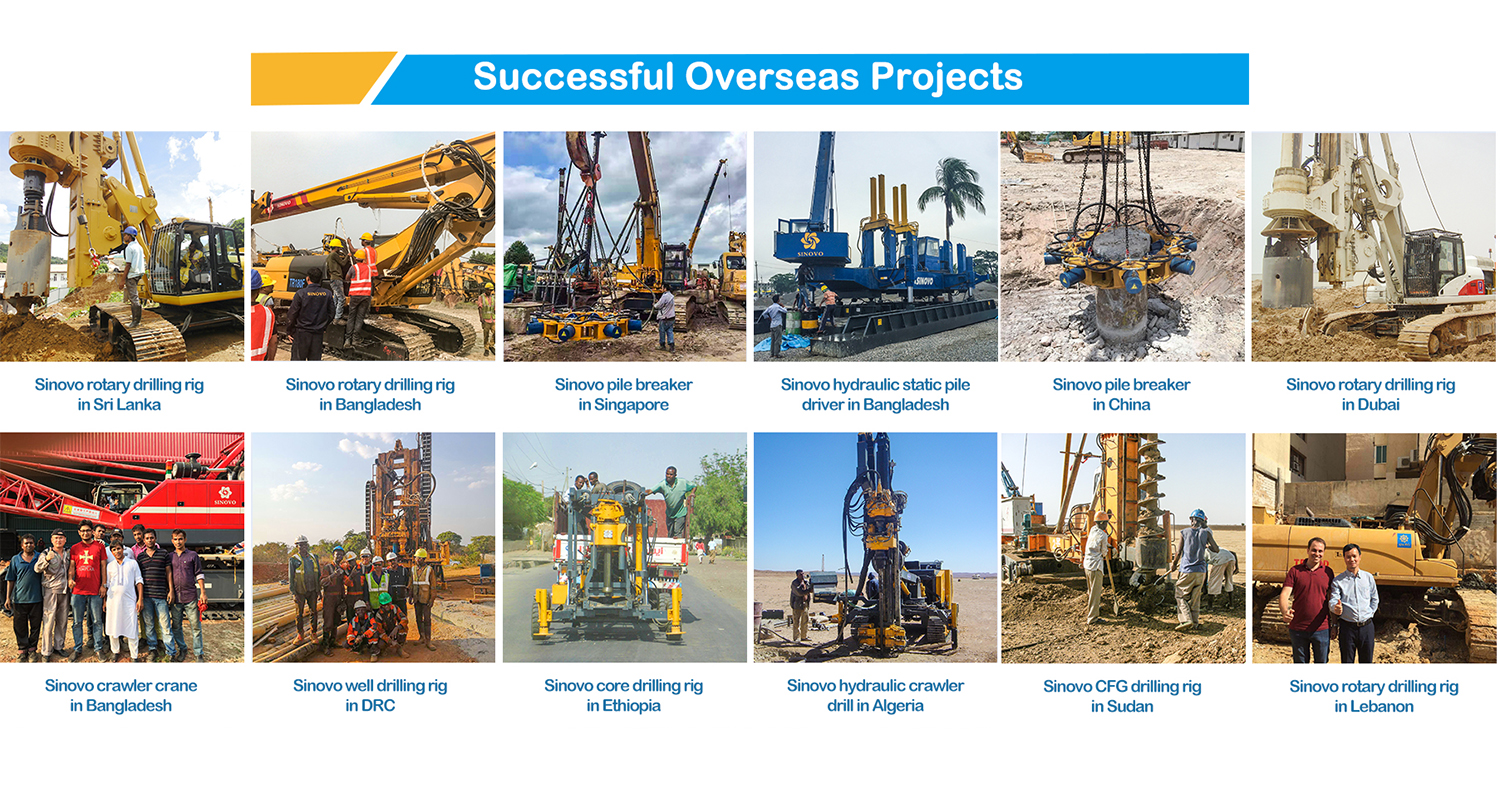The process of rotary drilling and hole forming by rotary drilling rig is firstly to enable the drilling tools to be correctly positioned to the pile position through the rig's own traveling function and mast luffing mechanism. The drill pipe is lowered under the guidance of the mast to place the bucket drill bit with a flap at the bottom to the hole position. The drill power head device provides torque for the drill pipe, and the pressurizing device transmits the pressurizing pressure to the drill pipe bit by means of the pressurizing power head, and the drill bit rotates to break rock and soil, It is directly loaded into the drill bit, and then the drill bit is lifted out of the hole by the drill lifting device and the telescopic drill pipe to unload the soil. In this way, the soil is continuously taken and unloaded, and the straight drilling meets the design depth. At present, the working principle of rotary drilling rigs mostly adopts the form of connecting drill pipes and removing slag bucket. During the drilling process, the mud circulation mode is often used. The mud plays the role of lubrication, support, replacement and carrying of drilling slag for such rigs.
With the increasingly strict environmental requirements for urban construction, traditional drilling rigs are facing a greater crisis. The rotary drilling rig adopts the form of power head, and the working principle of the rotary drilling rig is to use a short spiral drill or a rotary bucket, use a powerful torque to directly rotate the soil or gravel and other drilling slag, and then quickly lift it out of the hole. Dry construction can be achieved without mud support. Even if the special stratum requires mud wall protection, the mud only plays a supporting role, and the mud content in drilling is quite low, This greatly reduces the pollution sources, thereby reducing the construction cost, improving the construction environment, and achieving high hole forming efficiency. This is why the rotary drilling rig has good environmental protection.
Rotary drilling rig is a kind of construction machinery suitable for drilling operation in building foundation engineering. It is mainly suitable for the construction of sandy soil, cohesive soil, silty soil and other soil layers. It is widely used in the construction of cast-in-place piles, continuous walls, foundation reinforcement and other foundations. The rated power of rotary drilling rigs is generally 125~450kW, the power output torque is 120~400kN · m, * the diameter of large holes can reach 1.5~4m, * the depth of large holes is 60~90m, which can meet the requirements of various large foundation construction.
This type of drilling rig generally adopts hydraulic crawler type telescoping chassis, self lifting foldable drilling mast, telescoping drill pipe, automatic verticality detection and adjustment, digital display of hole depth, etc. The whole machine is generally controlled by hydraulic pilot control and load sensing, which is characterized by easy and comfortable operation. The main winch and auxiliary winch can be used for various situations on the construction site. This type of drilling rig, with different drilling tools, is suitable for dry (short spiral) or wet (rotary bucket) drilling operations and rock formation (core drill) drilling operations. It can also be equipped with long spiral drills, grab buckets for diaphragm walls, vibratory pile hammers, etc., to achieve a variety of functions, mainly for municipal construction, highway bridges, industrial and civil buildings, diaphragm walls, water conservancy, anti-seepage slope protection and other foundation construction.
Post time: Nov-25-2022


